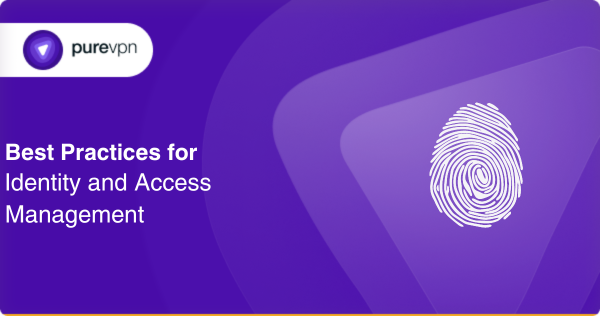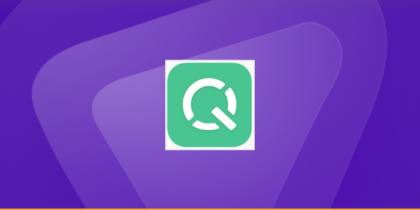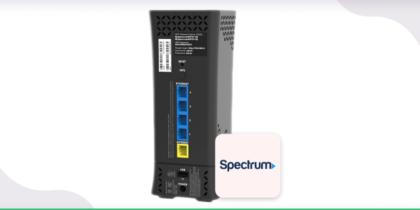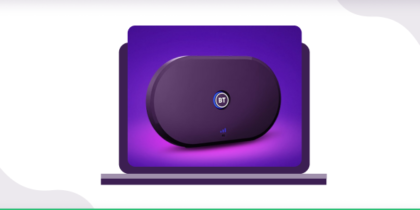Table of Contents
With cyber threats and attacks spiraling out of control, it has become crucial for you and organizations alike to ensure the security of any sensitive information. In today’s digital landscape, identity, and access management (IAM) has become critical for the cybersecurity strategy of any organization.
With proper IAM practices in place, organizations can feel better equipped against unauthorized access and can mitigate the risk of data breaches.
Read More: What is Identity Management?

What are IAM practices and what’s the best way to apply them
Identity and Access Management (IAM) serves as the cornerstone of cybersecurity for both, large and small corporations. These practices ensure that all your sensitive data is only accessible to authorized individuals. Effective IAM practices entail the placement of all the necessary rules, procedures, and technologies that manage digital identities and ensure safe access to resources.
Here are some of the IAM practices you need to be aware of that are crucial for the safety of any organization’s data:
Heard about ensuring user authentication
It is the process that helps verify the identity of the person who is trying to access the system. User authentication can be ensured through multiple factors such as strong passwords, biometrics, or security tokens. Written below are some of the best practices that help ensure that only the right people have access to sensitive data:
You should always use strong passwords: You must be encouraged to use strong passwords for the safety of their systems. All passwords should include numbers, symbols, and a combination of upper and lowercase letters.
Implementing multi-factor authentication (MFA): No matter how strong a password is, seasoned hackers can still crack it. This is why it’s important to set up more than one form of identification before granting access to you. This can be done by setting up additional passwords or by generating security tokens.
You should regularly review and update authentication policies: The online digital landscape is ever-changing, and businesses need to adapt to it accordingly. A periodic review and update of authentication policies are necessary to align them with the organization’s security goals.
Maintaining access control
It is important to regulate access to resources based on your identity and role within the organization. Maintaining effective access control policies helps in preventing unauthorized access to any sensitive data. Written below are some must-follow practices for maintaining access control:
Implementing the principle of least privilege (POLP): Employees should be given access to the minimum amount of data, such that they only have what’s needed to perform their jobs. The POLP restricts users from accessing anything that isn’t necessary for the function of their jobs.
Regularly reviewing and updating access control policies: Again, reviewing and updating access control policies helps ensure that they align well with the organization’s security goals.
Implementing segregation of duties
Ever heard the phrase that you shouldn’t put all your eggs in one basket? The same applies here. To reduce fraud and the risk of errors, duties must be segregated to ensure that no single user has complete control over any process.
Setting up monitoring checks
The best way to respond to security risks is to know what went wrong. And this can only be done through monitoring, tracking, and recording user activity to detect any anomalies. Here are some best practices to ensure careful monitoring:
Implement a centralized logging system
A centralized logging system can always help consolidate logs from multiple sources and analyze them in case of security incidents.
Monitor user activity
It is easy to detect suspicious behavior by tracking behaviors such as multiple login attempts or unauthorized access attempts.
Implement alerts and notifications
This helps notify security teams immediately in case security incidents happen.
What happens when organizations don’t implement IAM practices
Failure to prioritize Identity and Access Management (IAM) practices set organizations at a higher risk of data breaches and cyberattacks and can lead to terrible financial losses. In addition, they also suffer from reputational damages and legal consequences, the effects of which can linger on for years or even decades.
Here are some examples of the consequences organizations have to face if they fail to implement proper IAM practices:
They face an unprecedented risk of data breaches
Without proper IAM practices, organizations may not be able to effectively control access to sensitive data. This increases the risk of data breaches, which can result in the loss of critical data, and eventually lead to financial loss and reputational damage.
Higher risk of cyberattacks
Poor IAM practices open up vulnerabilities in the systems that hackers can exploit. This leads to perfectly executed cyberattacks on the company systems and unauthorized access to data.
Can create compliance issues
There are several laws in place, such as the GDPR policies, to protect user data. Organizations are subject to these regulatory requirements which also mandate specific IAM practices. Failure to comply with these regulations has terrible legal consequences, including fines and legal action.
Damage to the reputation
Even when all else has passed and been dealt with, the blow given to the organization’s reputation still lingers on for months and years to come. A single data breach or cyberattack can lead to the loss of customers and partners, which is always bad for the organization’s bottom line.
Overall, neglecting IAM practices can cause serious consequences for organizations. This is why It is important to prioritize IAM practices to protect both the customers, as well as and their stakeholders from cyber threats and financial losses.
Read more: Benefits of Identity and Access Management
Failure to practice IAM has led to disasters in the past
The consequences of not practicing IAM practices are many. You don’t have to take our word for it. Just read through the stories below to know the disasters that accompany the lack of IAM practices.
Russian hackers breach SolarWinds
It was in late 2020 when Russian hackers gained unauthorized access to SolarWinds, a US-based IT firm. This led to the leakage of important and sensitive information belonging to both government agencies and companies that were using SolarWinds’ software. It was later found that the security measures at SolarWinds were inadequate to combat any threat, and the company had failed to secure any of its systems.
The source code of EA’s most popular games stolen
Not too long ago, gaming company Electronic Arts (EA) suffered a data breach that saw hackers stealing the source code for some of the company’s most popular games. That was not all. The hackers also illegally accessed sensitive information about employees and customers. It was later found out that the hackers had used stolen credentials that were for sale on the dark web to gain access to EA’s systems.
Personal information of 50 million customers stolen
A single anomaly in the security systems has the potential to affect tens of millions of individuals. This happened when T-Mobile was breached and personal information belonging to over 50 million customers was stolen by hackers. These included names, phone numbers, as well as social security numbers. The fault was in T-Mobile’s security practices when it was revealed that it had failed to properly secure its servers, allowing hackers to gain access.
These incidents highlight the immense importance of identity and access management practices to protect sensitive information and prevent data breaches.
How to ensure that IAM practices are being properly followed within the organization
Here are some steps you can take to ensure the safety of your data systems with the use of IAM practices:
- Conduct regular security assessments: As mentioned above, regular security assessments are incredibly useful in identifying potential vulnerabilities in the organization’s IAM practices. Through regular security assessments, you can identify key areas that require improvement and take appropriate actions on time to address any issues.
- Implement a VPN: You can make use of cybersecurity tools to bolster the defenses against hackers. This includes implementing the use of a VPN to secure your network and protect the organization’s sensitive data. Premium VPN services, such as PureVPN, can encrypt your online traffic, and make it more difficult for hackers to intercept your data. Adding VPN usage as part of your organization’s IAM practices can go a long way in ensuring the security of your systems.
- Train employees: Employees should always be properly trained on IAM best practices to make sure that they don’t perform any mistakes that can lead to data breaches. Employees should know how to create strong passwords, how to identify phishing scams, and how to detect and report any suspicious activity.
Taking these steps can greatly reduce the risk of data breaches and can help ensure that IAM practices are being properly followed within your organization.
In a nutshell
Ultimately, in today’s digital world, strong identity and access management policies are extremely critical. As the amount of data breaches increases, enterprises must prioritize IAM to safeguard critical information and avoid cyberattacks. This can be done by following the best practices suggested in the above guide.
Remember that it only takes one successful cyberattack to put a whole business at risk. Therefore, investing in IAM is a small price to pay for complete peace of mind.
Frequently asked questions
MFA is a security method that requires users to give two or more kinds of authentication to access a system or application. This could be something the user knows (like a password), something the user has (like a token or smart card), or something the user is (such as biometric factors like fingerprint or facial recognition).
RBAC is a method of access control that grants access to users based on their role within an organization. For example, someone with a manager role can access certain data that a regular employee cannot.
Some common challenges that organizations face include resistance to change from employees, a lack of support, difficulty in integrating with legacy systems, and managing a sheer number of users and access rights.



